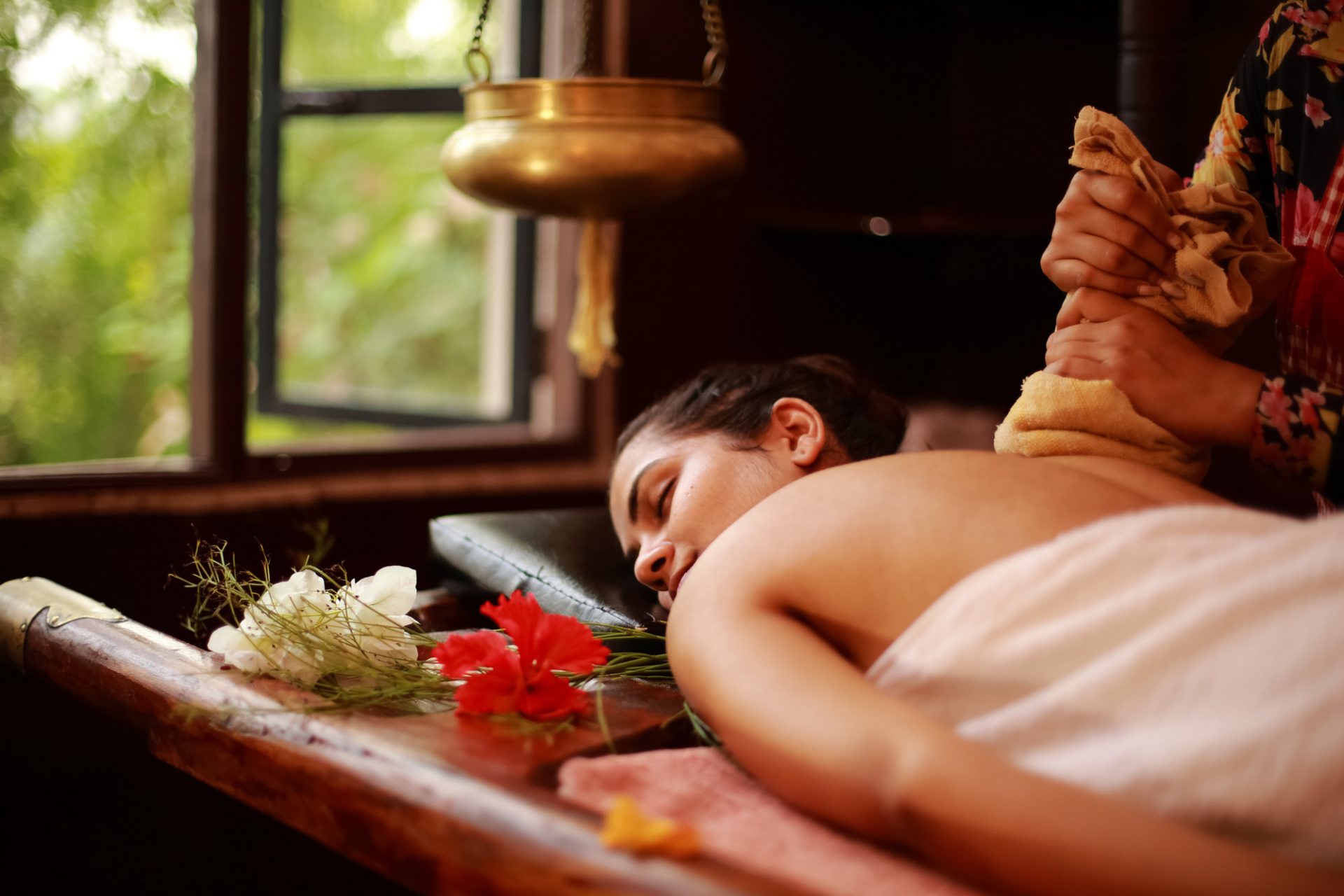
Supporting Subheading
Panchakarma
The Panchakarma procedure involves five main therapies—Vamana, Virechana, Basti, Nasya, and Raktamokshana—each tailored to specific indications. The entire Panchakarma process consists of three stages: Purvakarma (Preparation), Pradhanakarma (Main Procedure), and Paschatkarma (Post-Treatment Care). Here is a detailed breakdown of each procedure, its indications, and the steps involved.
Vamana (Therapeutic Emesis)
- Indications:Respiratory conditions (e.g., asthma, bronchitis), digestive issues (e.g., indigestion, nausea), skin disorders (e.g., acne, psoriasis), obesity, and Kapha-related emotional imbalances (e.g., lethargy, depression).
- Procedure:
- Purvakarma (Preparation):Snehana (internal oleation with ghee or medicated oil) and Swedana (steam therapy) for 3–7 days.
- Pradhanakarma (Main Procedure):Patient is given an emetic herb (e.g., Madanaphala) to induce vomiting. This process helps expel Kapha-related toxins from the stomach and lungs.
- Paschatkarma (Post-Treatment):Dietary restrictions, focusing on light, easy-to-digest foods, and herbal teas to stabilize digestion.
Virechana (Purgation Therapy)
- Indications:Pitta disorders, including acid reflux, gastritis, skin issues (e.g., dermatitis, eczema), liver and gallbladder disorders, and eye conditions.
- Procedure:
- Purvakarma (Preparation):Snehana with ghee or oil intake for internal lubrication, followed by Swedana.
- Pradhanakarma (Main Procedure):Administration of herbal laxatives (e.g., Trivrit) to induce controlled bowel movements, which eliminates Pitta-related toxins from the intestines and liver.
- Paschatkarma (Post-Treatment):Rest, mild dietary adjustments, and gradual reintroduction of regular foods.
Basti (Enema Therapy)
- Indications:Vata disorders, such as joint pain (arthritis, gout), neurological conditions (sciatica, neuralgia), digestive issues (constipation, gas), reproductive health problems, and psychological issues like anxiety.
- Procedure:
- Purvakarma (Preparation):Light diet and Snehana.
- Pradhanakarma (Main Procedure):Administration of two types of enemas:
- Anuvasana Basti (Oil Enema):Uses medicated oils to balance Vata.
- Niruha Basti (Herbal Decoction Enema):Uses herbal decoctions to detoxify the colon.
- Paschatkarma (Post-Treatment):Simple diet with warm, easily digestible foods, avoiding cold, dry, or hard-to-digest foods.
Nasya (Nasal Administration)
- Indications:Head and neck issues, including sinusitis, migraines, headaches, facial paralysis, mental fog, and emotional imbalances.
- Procedure:
- Purvakarma (Preparation):Facial massage and steam to the head and neck.
- Pradhanakarma (Main Procedure):Instillation of medicated oil or herbal liquids (e.g., Anu Taila) into each nostril. This clears mucus, improves circulation, and balances the doshas in the head.
- Paschatkarma (Post-Treatment):Avoiding exposure to cold, wind, and heavy exercise, with gentle dietary modifications.
Raktamokshana (Bloodletting)
- Indications:Blood-related disorders, skin conditions (psoriasis, eczema, acne), vascular issues (varicose veins), inflammatory conditions, and cases of toxin overload.
- Procedure:
- Purvakarma (Preparation):Light diet and internal oleation to prepare the body.
- Pradhanakarma (Main Procedure):Bloodletting methods may include leech therapy or venesection (using small incisions).
- Paschatkarma (Post-Treatment):Rest, dietary changes to support blood purification, and avoiding exposure to heat or intense sun.
Additional Notes on Panchakarma Procedure:
- Duration:Panchakarma therapies are generally carried out over a period of 7–21 days, depending on the individual’s needs and the severity of the health condition.
- Diet and Lifestyle:A key part of the process, focusing on a light, warm, and balanced diet, is crucial to promote digestion and prevent doshic imbalance during detoxification.
- Individualization:Treatment is personalized based on the individual’s Prakriti (body constitution) and Vikriti (current imbalances).
Panchakarma therapies are best conducted under the supervision of trained Ayurvedic practitioners who can tailor the treatments, ensure proper procedure, and manage post-treatment care for optimal healing.
